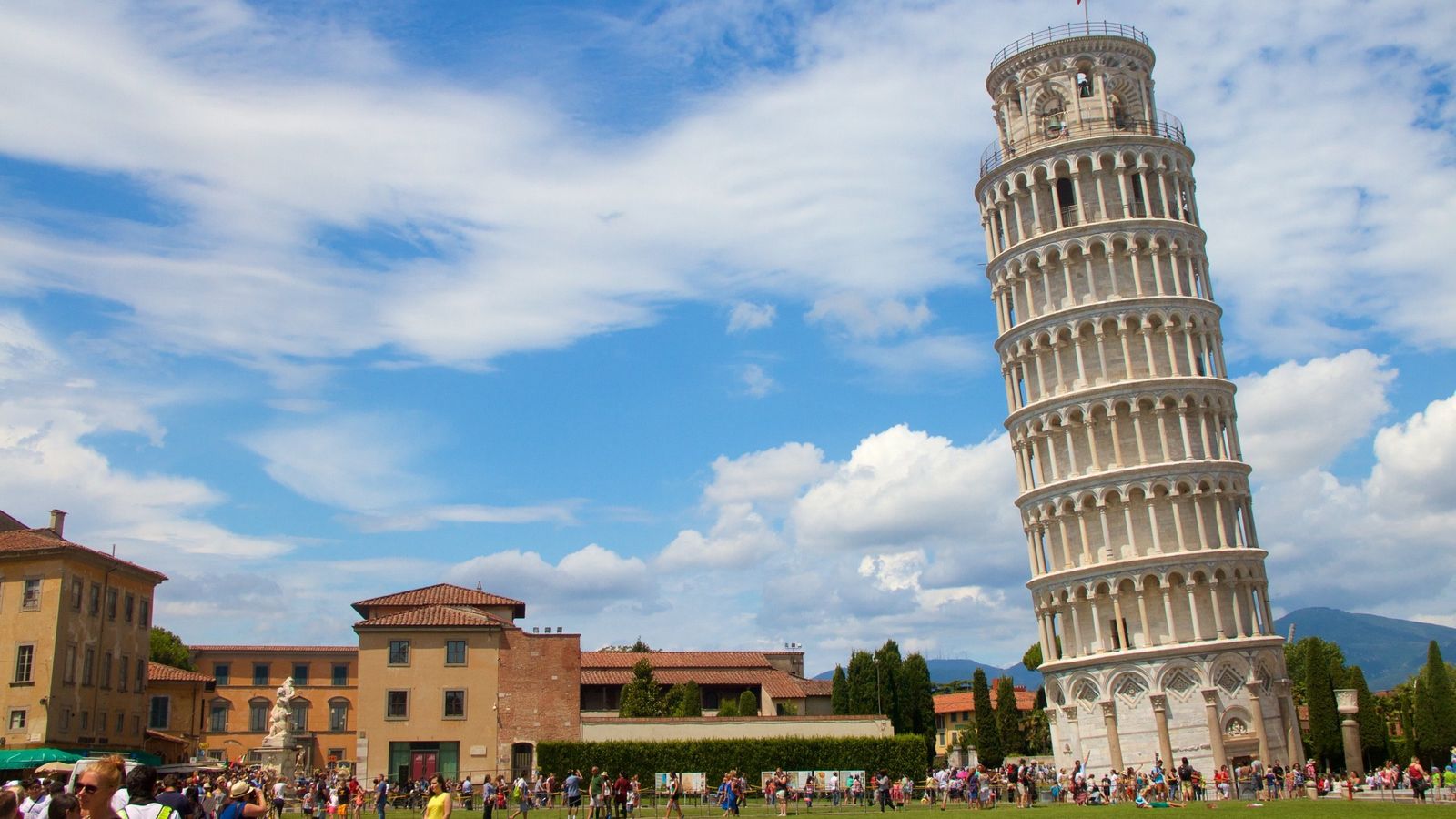
Why does the Leaning Tower of Pisa lean? The Leaning Tower of Pisa leans due to unstable foundation soil. Built on soft ground, the tower began tilting during construction in the 12th century. Engineers tried to correct the tilt by making one side taller, but it continued to lean. Over the years, various efforts have been made to stabilize it, including soil extraction and counterweights. Despite these efforts, the tower still leans, making it a unique architectural marvel. This iconic structure attracts millions of visitors annually, eager to see its famous tilt and learn about its fascinating history.
Key Takeaways:
- The Leaning Tower of Pisa took nearly 200 years to build and started leaning during construction due to unstable soil, making it a marvel of engineering and a symbol of human resilience.
- Despite its lean, the Leaning Tower of Pisa has survived earthquakes, inspired replicas worldwide, and remains a popular tourist attraction and cultural icon.
The Leaning Tower of Pisa: A Marvel of Architecture
The Leaning Tower of Pisa is one of the most recognizable structures in the world. Its unique tilt and historical significance make it a fascinating subject. Here are some intriguing facts about this architectural wonder.
-
The Leaning Tower of Pisa is located in Pisa, Italy, and is part of the cathedral complex known as Piazza dei Miracoli, or Square of Miracles.
-
Construction of the tower began in 1173 and continued for nearly 200 years, finally completing in 1372.
-
The tower started leaning during construction due to unstable foundation soil, which couldn't support its weight.
-
The tilt of the tower is approximately 3.97 degrees, which means the top of the tower is 12 feet off-center.
-
The Leaning Tower of Pisa is 183.3 feet tall on its highest side and 185.9 feet tall on its lowest side.
Historical Significance and Construction
The history behind the Leaning Tower of Pisa is as captivating as its appearance. Let's delve into some historical facts.
-
The tower was originally intended to be a freestanding bell tower for the nearby cathedral.
-
The architect of the Leaning Tower of Pisa remains a mystery, though some credit Bonanno Pisano or Gherardo di Gherardo.
-
The tower has eight stories, including the chamber for the seven bells.
-
The foundation of the tower is only 10 feet deep, contributing to its instability.
-
The construction was halted several times due to wars, which allowed the soil to settle and prevented the tower from collapsing.
Engineering Marvels and Challenges
Building the Leaning Tower of Pisa was no easy feat. Engineers faced numerous challenges, and their solutions were nothing short of ingenious.
-
Engineers used lead counterweights to stabilize the tower and reduce its tilt.
-
In the 1990s, a massive restoration project reduced the tilt by 17.7 inches, making it safer for visitors.
-
The tower's lean is caused by a combination of its heavy weight, soft ground, and shallow foundation.
-
The tower is made of white and grey marble, which adds to its aesthetic appeal.
-
The total weight of the Leaning Tower of Pisa is estimated to be around 14,500 tons.
Cultural Impact and Tourism
The Leaning Tower of Pisa has had a significant impact on culture and tourism. Its unique tilt attracts millions of visitors each year.
-
The tower is one of the most photographed landmarks in the world.
-
It was declared a UNESCO World Heritage Site in 1987, along with the entire Piazza dei Miracoli.
-
The Leaning Tower of Pisa has inspired numerous replicas and imitations around the globe.
-
The tower is often used as a symbol of human error and resilience.
-
Tourists love taking creative photos that make it look like they are holding up or pushing down the tower.
Fun and Lesser-Known Facts
Beyond its historical and architectural significance, the Leaning Tower of Pisa has some fun and lesser-known facts.
-
Galileo Galilei is said to have conducted experiments on gravity by dropping objects from the tower.
-
The tower has survived at least four strong earthquakes since its construction.
-
The bells of the tower are still functional and are rung on special occasions.
-
The Leaning Tower of Pisa has been featured in numerous movies, TV shows, and cartoons.
-
The tower's lean has been stabilized, but it still shifts about 1 millimeter each year.
Preservation Efforts and Modern-Day Relevance
Preserving the Leaning Tower of Pisa has been a priority for engineers and historians. Let's explore some facts about these efforts.
-
In 1990, the tower was closed to the public for safety reasons and reopened in 2001 after extensive stabilization work.
-
The tower is monitored continuously to detect any changes in its tilt or structure.
-
Modern technology, including lasers and sensors, is used to ensure the tower's stability.
-
The tower's iconic lean has been preserved to maintain its historical integrity.
-
The Leaning Tower of Pisa remains a symbol of architectural ingenuity and perseverance.
Interesting Tidbits and Trivia
Here are some more interesting tidbits and trivia about the Leaning Tower of Pisa that you might not know.
-
The tower's lean was not intentional; it was a result of engineering miscalculations.
-
The Leaning Tower of Pisa has a spiral staircase with 294 steps leading to the top.
-
The tower's base is slightly curved to counteract the lean.
-
The tower has been closed to the public several times throughout history for safety reasons.
-
The Leaning Tower of Pisa is often used in physics and engineering courses as a case study.
The Leaning Tower of Pisa in Popular Culture
The Leaning Tower of Pisa has made its mark in popular culture, appearing in various forms of media and entertainment.
-
The tower has been featured in video games, including the popular game "Assassin's Creed."
-
It has appeared in animated films like "Cars 2" and "The Simpsons Movie."
-
The tower is a popular subject for artists and photographers worldwide.
-
The Leaning Tower of Pisa has been referenced in literature, including works by Dante and Mark Twain.
-
The tower's unique appearance has made it a favorite backdrop for fashion shoots and commercials.
Final Fascinating Facts
Let's wrap up with some final fascinating facts about the Leaning Tower of Pisa.
-
The tower's construction involved three stages over 199 years due to interruptions.
-
The Leaning Tower of Pisa was originally designed to be perfectly vertical.
-
The tower's tilt began during the construction of the second floor.
-
The Leaning Tower of Pisa is one of the most visited tourist attractions in Italy.
-
Despite its lean, the tower has stood the test of time and remains a testament to human ingenuity.
The Leaning Tower's Enduring Charm
The Leaning Tower of Pisa isn't just a marvel of architecture; it's a testament to human ingenuity and resilience. Despite its tilt, the tower has stood the test of time, drawing millions of visitors each year. Its unique history, from its unintended lean to the efforts to stabilize it, makes it a fascinating subject.
Whether you're an architecture buff or just curious, the tower's story offers something for everyone. It's a reminder that even imperfections can become iconic. Next time you see a picture of the Leaning Tower, you'll know there's more to it than meets the eye.
So, if you ever get the chance to visit, don't just snap a photo. Take a moment to appreciate the history and effort that went into preserving this world wonder. The Leaning Tower of Pisa truly is a symbol of enduring charm.
Frequently Asked Questions
Was this page helpful?
Our commitment to delivering trustworthy and engaging content is at the heart of what we do. Each fact on our site is contributed by real users like you, bringing a wealth of diverse insights and information. To ensure the highest standards of accuracy and reliability, our dedicated editors meticulously review each submission. This process guarantees that the facts we share are not only fascinating but also credible. Trust in our commitment to quality and authenticity as you explore and learn with us.


